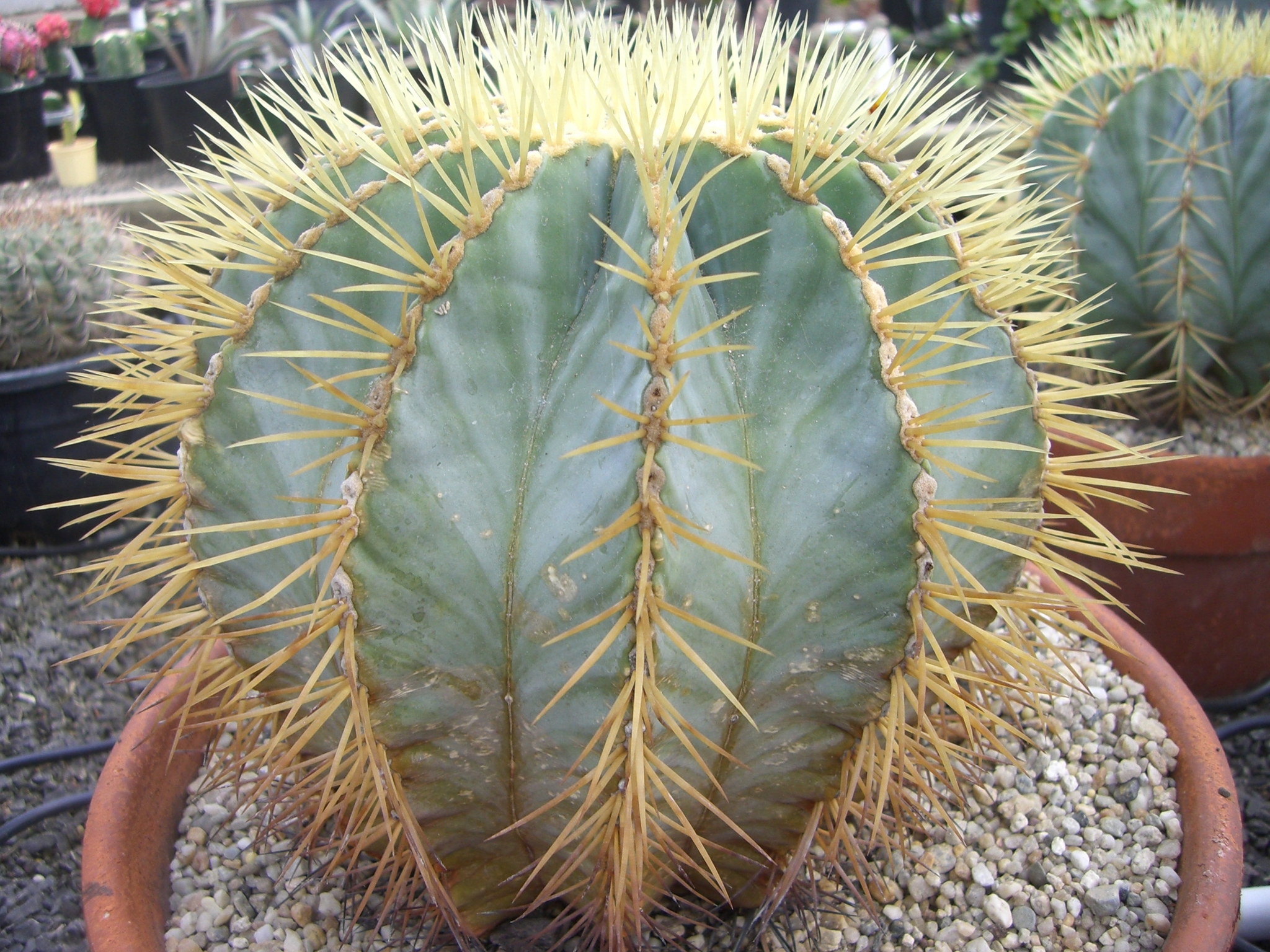
Latin ferox—fierce, referring to the sometimes vicious spines.
Body solitary or in clusters, flattened spherical to cylindrical and strongly ribbed. Areoles with nectar-secreting glands. Flowers funnel- or bell-shaped; mostly summer. Pericarpel and flower tube scaly, the scale axils naked; perianth segments and stamens separated by a ring of hairs. Fruit spherical to oblong becoming dry and opening by a basal pore.
Ferocactus setispinus (Engelm.) L.D. Benson is now placed in Thelocactus.
The true identity of plants labelled F. horridus Britton & Rose is uncertain: plants under this name are now placed in F. peninsulae (Weber) Britton & Rose although some may be better placed in F. wislizenii var. herrerae (Ortega) N.P. Taylor.
Mature body often large, more than 20 cm wide and with pronounced ribbing; flowers mostly short-tubed with broad naked scales; a ring of hairs between stamens and the innermost perianth segments; fruit opening by a basal pore.
23 species from Mexico and the SW USA.
Taylor (1984).
Source: (1997). Cactaceae. In: . Horticultural Flora of South-eastern Australia. Volume 2. Flowering plants. Dicotyledons. Part 1. The identification of garden and cultivated plants. University of New South Wales Press.
